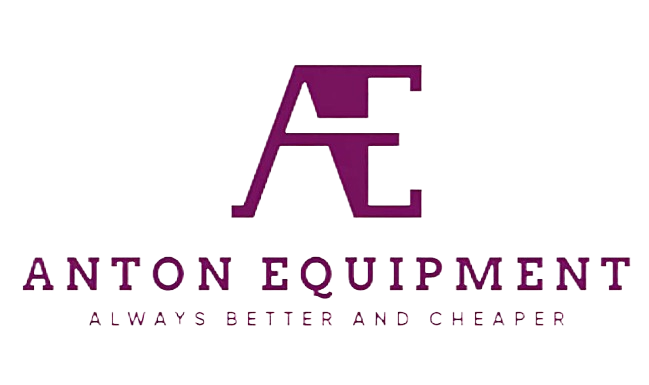News
Adapting Mini Excavator Attachments for Small-Scale Landscaping Projects
Essential Mini Excavator Attachments for Landscaping Projects
When it comes to landscaping projects, selecting the right mini excavator attachments can make a significant difference in efficiency and effectiveness. From planting trees to managing debris, these attachments enhance the functionality of mini excavators, making them indispensable tools for various tasks.
Excavator Augers for Precision Planting & Fencing
Excavator augers are crucial for creating precise holes used in planting trees, shrubs, and erecting fence posts. These attachments excel in diverse soil conditions, reducing the necessity for manual labor significantly. By utilizing augers, project efficiency can be greatly increased, especially in a residential setting, as they can drill a hole within a minute, compared to several minutes with a manual shovel. This transition from manual to mechanized drilling considerably reduces the time and effort required. Augers come in different sizes to meet specific needs, ranging from small diameters suitable for delicate plants to large ones designed for robust fencing systems. Investing in a variety of auger sizes allows for flexibility and precision in diverse landscaping applications.
Compact Grapple Buckets for Debris Management
Compact grapple buckets augment a mini excavator's abilities by enabling efficient debris handling and transport, which is vital in many landscaping projects. These attachments drastically cut down both labor costs and project time, as they swiftly manage large volumes of debris. In densely populated residential areas, where space is a premium, grapple buckets offer exceptional maneuverability and waste management. Their design allows them to grab and carry varied materials, like branches, rocks, and soil, making them a multipurpose tool in site preparation and cleanup. Their versatility also extends to grading and excavation tasks, reinforcing their status as essential attachments in landscaping equipment arsenals.
Trenching Buckets for Utility Installation
Trenching buckets are indispensable in creating narrow trenches needed for utility installation in landscaping, such as irrigation and drainage systems. Using the appropriate trenching bucket helps prevent soil compaction, ensuring that the installed utilities function properly without affecting existing landscaping elements. For instance, when installing an irrigation system, precise trenching is essential to avoid damage to nearby plants. Trenching buckets also offer versatility by assisting in other operations, such as grading and drainage, which further extend the utility of the mini excavator. Having a trenching bucket on hand ensures comprehensive site preparation and efficient project execution.
Selecting the Right Attachments for Small-Scale Needs
Matching Attachments to Machine Specifications
Choosing the right attachments for a mini excavator necessitates an understanding of the machine's specifications, such as its hydraulic flow and operating weight. These specifications are vital in ensuring the compatibility and efficiency of the chosen attachments. For example, attachments that are too large or heavy for the machine can cause undue strain on the hydraulic system, potentially leading to costly repairs. Manufacturers often provide guidelines or specifications for recommended attachments, simplifying the selection process for operators. Ensuring compatibility not only optimizes performance but also prolongs the lifespan of both the excavator and its attachments.
Evaluating Project Requirements: From Soil Type to Space Constraints
Assessing the specific requirements of a project is crucial when selecting mini excavator attachments, as factors like soil type and space constraints play significant roles. For instance, clay soils might require more robust attachments, such as specific augers or buckets, to facilitate effective excavation. Space constraints, particularly in residential or urban areas, necessitate the use of compact attachments that can maneuver through tight spaces without causing damage to existing landscapes. Additionally, it's important to consider the surrounding environment to ensure that attachments do not adversely affect nearby plants or structures during operation.
Budget Considerations for Skid Steer-Compatible Options
When budgeting for mini excavator attachments, it's essential to consider both the initial purchase cost and the long-term maintenance expenses. Evaluating the return on investment (ROI) helps determine whether a more expensive attachment could offer better value over time. Skid steer-compatible attachments, though possibly higher in initial cost, often prove versatile and reduce the need for multiple pieces of equipment, leading to potential cost savings. Operators can explore price comparisons across different manufacturers or consider purchasing used attachments to find budget-friendly solutions without compromising quality. By balancing initial costs with future savings, operators can make informed decisions on their equipment investments.
Optimizing Attachment Performance & Longevity
Routine Maintenance for Earth Auger & Bucket Components
Routine maintenance is essential for preserving the function and life of excavator attachments, including mini excavator attachments. Regular inspections for wear and tear can preempt potential failures during operations, thus maintaining project timelines and reducing unplanned costs. This includes tasks like sharpening auger bits, inspecting hydraulic connections, and cleaning dirt from bucket components, all of which ensure the efficient functionality of these attachments. Research indicates that operators who follow a systematic maintenance regime often report a 20% boost in productivity. Scheduled maintenance not only extends the lifespan of attachments but also enhances safety by preventing the risks associated with malfunctioning parts.
Proper Storage Solutions to Prevent Corrosion
Proper storage solutions are crucial for mini excavator attachments, such as augers and grapple buckets, to prevent corrosion and extend their lifespan, especially in wet or humid conditions. Utilizing indoor storage or covered areas, and using tarps when necessary, can shield these components from moisture. Regular inspection is vital to identify and address any signs of rust. Applying corrosion-resistant coatings provides an added layer of protection, reducing the need for frequent painting or repairs. Such practices are economically advantageous in the long run, given the budget constraints contractors often face.
When to Upgrade vs. Repair Landscape-Specific Attachments
Determining whether to upgrade or repair landscape-specific attachments involves assessing the cost-effectiveness and performance of current tools against investing in newer options. If repair costs surpass 50% of the price of a new attachment, an upgrade may be more financially prudent. Upgraded attachments frequently integrate advanced features and improved designs that can significantly boost operational efficiency. For contractors with tight budgets who aim to maintain productivity, choosing when to replace outdated equipment is a crucial decision that impacts long-term success and efficiency.












































